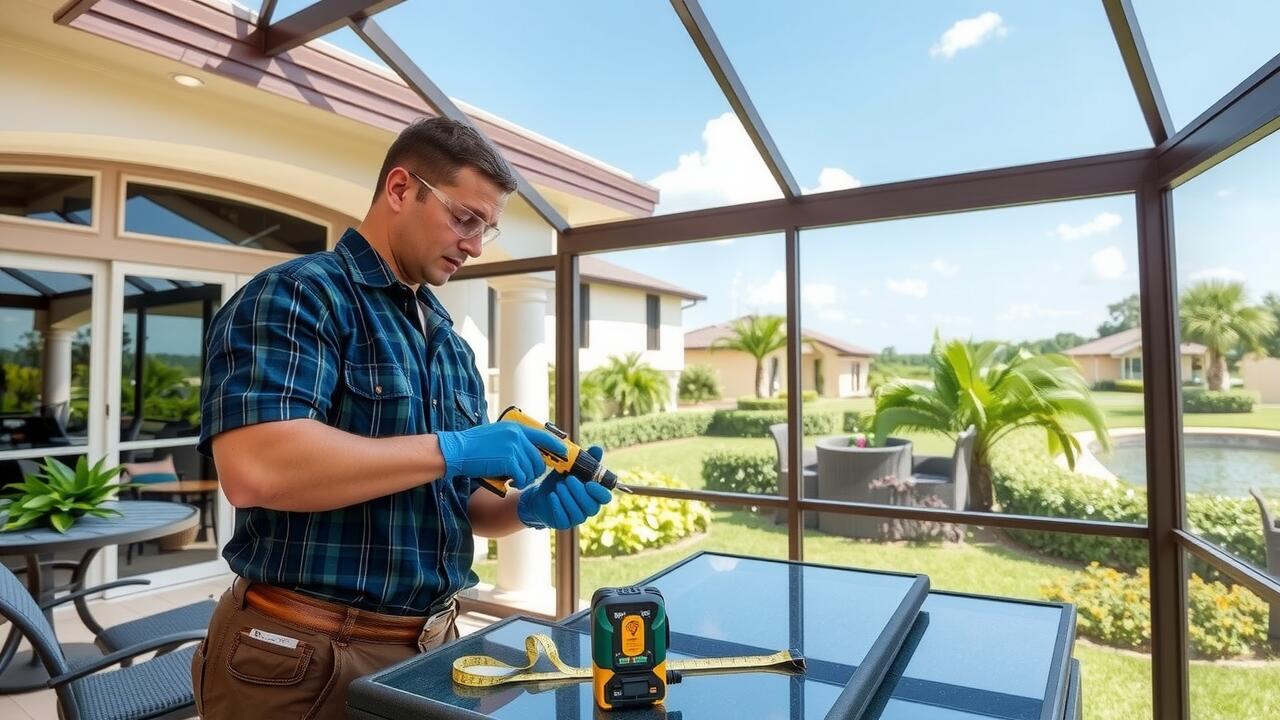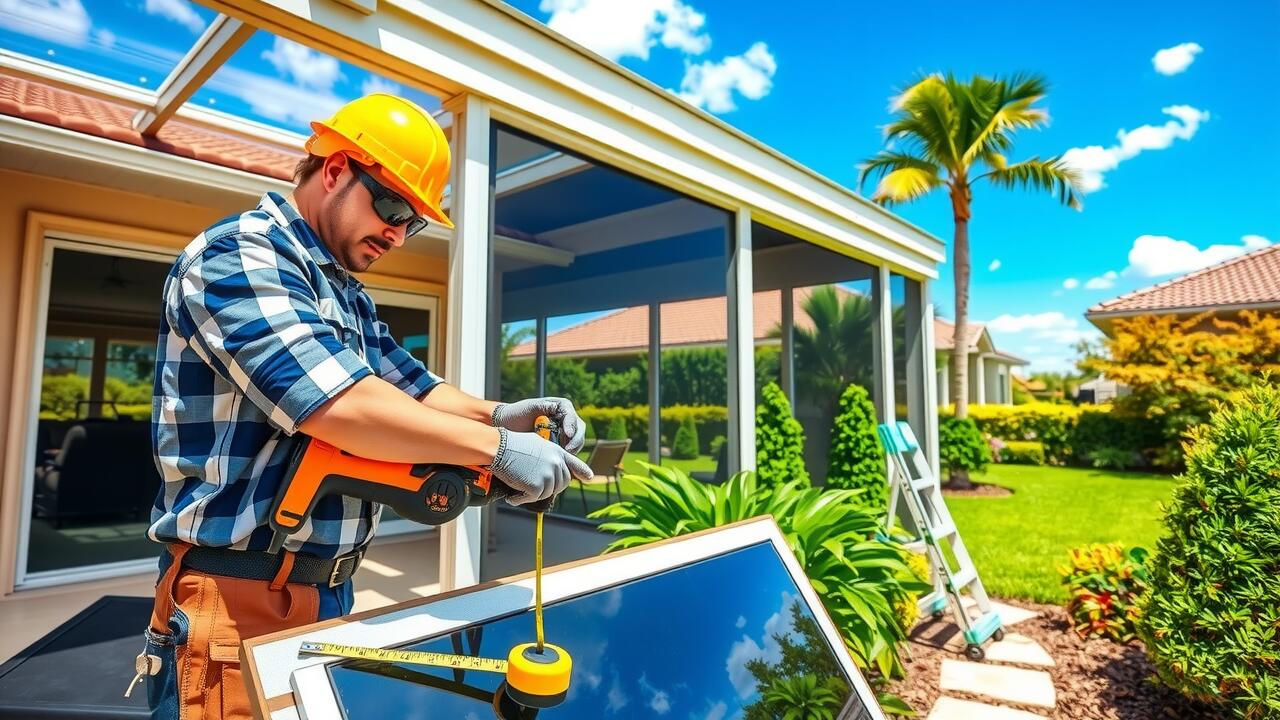
Repurposing Materials for Enclosure
Utilizing repurposed materials can be an economical and creative way to enclose a patio. Old wooden pallets, for instance, can be transformed into rustic fencing or wall panels with some basic tools and a bit of paint. Additionally, repurposing corrugated metal or reclaimed wood not only adds a unique aesthetic but also helps reduce waste. These materials can provide durability and character to a space, while keeping costs low. Lanai enclosures can benefit significantly from these upcycled options, as they often blend functionality with a distinct style.
Another effective approach is to use materials from previous construction or renovation projects. Whether it’s leftover vinyl siding or discarded bricks, many homeowners have access to materials that can serve a new purpose. Extra fencing sections from a neighbor’s project or leftovers from a DIY job can be cut and adjusted to fit your patio requirements. Integrating these items into your design can yield impressive results without breaking the bank. Lanai enclosures can easily incorporate these found materials, ensuring a cohesive look that aligns with budgetary restrictions.
Ideas for Upcycling Old Fencing
Repurposing old fencing can be an innovative and budget-friendly way to create an enclosure for your patio. Wooden panels from old fences can be cleaned, sanded, and reconfigured to form a rustic barrier that provides privacy and style. This method not only saves money but also gives new life to materials that would otherwise go to waste. For those considering a more polished look, painting or staining the reclaimed wood can enhance its aesthetic appeal, making it a versatile choice for various design preferences.
Another option is to use the fencing material to create unique features such as trellises or privacy screens, which can integrate beautifully into the landscape. Complementing these elements with plants or climbing vines provides additional charm while enhancing the overall ambiance of the patio. Incorporating ideas like these can lead to a custom enclosure that rivals expensive Lanai Enclosures without breaking the bank. Upcycling not only proves to be cost-effective but also contributes to environmental sustainability by reducing material waste.
Temporary Enclosure Methods
Temporary enclosure methods can offer a flexible solution for enclosing a patio without a long-term commitment. Many homeowners turn to portable screens as a quick way to provide privacy and protection from insects. These screens can be easily assembled and disassembled as needed. Options vary from mesh panels to retractable designs, which allow users to enjoy an open space when desired and close off the area when necessary.
Lanai enclosures represent another alternative for those seeking a temporary solution. They provide a balance of sunlight and shade, allowing enjoyment of the patio while keeping out unwanted pests. These structures can be constructed from lightweight materials, making them easy to set up and remove. Their versatility enables homeowners to adapt the space according to seasonal needs or personal preferences.
Pros and Cons of Using Portable Screens
Portable screens can offer flexibility and convenience when it comes to enclosing a patio. They are easy to set up and disassemble, making them ideal for temporary needs or renters. Users can quickly adapt their space to different weather conditions or events. Various designs on the market cater to different aesthetics, which helps maintain the visual appeal of the outdoor area.
However, there are drawbacks to consider when opting for portable screens. These structures may not provide the same level of durability as permanent installations like Lanai enclosures. Strong winds or heavy rain can compromise their stability. Additionally, portable screens may not fully block out insects or provide privacy, limiting their effectiveness compared to sturdier alternatives.
Exploring Prefabricated Options
Prefabricated options for enclosing a patio offer a convenient solution without the extensive commitment of traditional construction. Many homeowners are turning to products like Lanai Enclosures, which provide an effective barrier against insects while allowing fresh air and natural light to filter through. These enclosures come in various styles and materials, making it easier to find a design that complements your home’s aesthetic. The ease of installation can also be a significant advantage, often requiring only basic tools and a weekend of work.
Cost is a crucial factor when considering prefabricated choices. While initial pricing varies based on size and material quality, Lanai Enclosures can be relatively affordable compared to custom-built alternatives. Considering long-term durability and maintenance requirements is essential to ensure the investment pays off in both functionality and aesthetics. By weighing the upfront costs against the benefits, homeowners can make informed decisions about enclosing their patios effectively.
Evaluating the Cost of Pre-Made Kits
Pre-made kits present a convenient option for those looking to enclose their patios without embarking on a lengthy construction project. These kits often include all necessary materials, which can simplify the installation process. The pricing can vary widely based on size, materials, and design features. It’s essential to compare various brands to find a kit that fits within your budget while still addressing your enclosure needs.
Lanai enclosures are a popular choice among homeowners, providing a balance of aesthetic appeal and durability. While they may come with a higher upfront cost compared to DIY solutions, the longevity and minimal maintenance requirements can offer long-term savings. Carefully researching the features and customer reviews of different kits can help ensure that you make a wise investment for your patio space.
FAQS
What is the cheapest way to enclose a patio?
The cheapest way to enclose a patio often involves repurposing materials like old fencing or using temporary methods such as portable screens. Upcycling existing materials can save costs while still providing a functional enclosure.
Can I use old fencing to enclose my patio?
Yes, old fencing is a great option for enclosing a patio. By repurposing wooden or metal fencing panels, you can create a cost-effective barrier that adds privacy and style to your outdoor space.
What are some temporary enclosure methods for a patio?
Temporary enclosure methods include using portable screens, outdoor curtains, or trellises with climbing plants. These options are often affordable and allow for flexibility in design and function.
What are the pros and cons of using portable screens for patio enclosure?
Pros of using portable screens include affordability, easy setup, and the ability to rearrange or remove them as needed. The cons may include less durability compared to permanent structures and limited protection from harsh weather.
How much do pre-made patio enclosure kits typically cost?
The cost of pre-made patio enclosure kits can vary widely based on the materials and size, but you can generally find options ranging from a few hundred to several thousand dollars. It’s best to evaluate your space and budget before making a decision.
